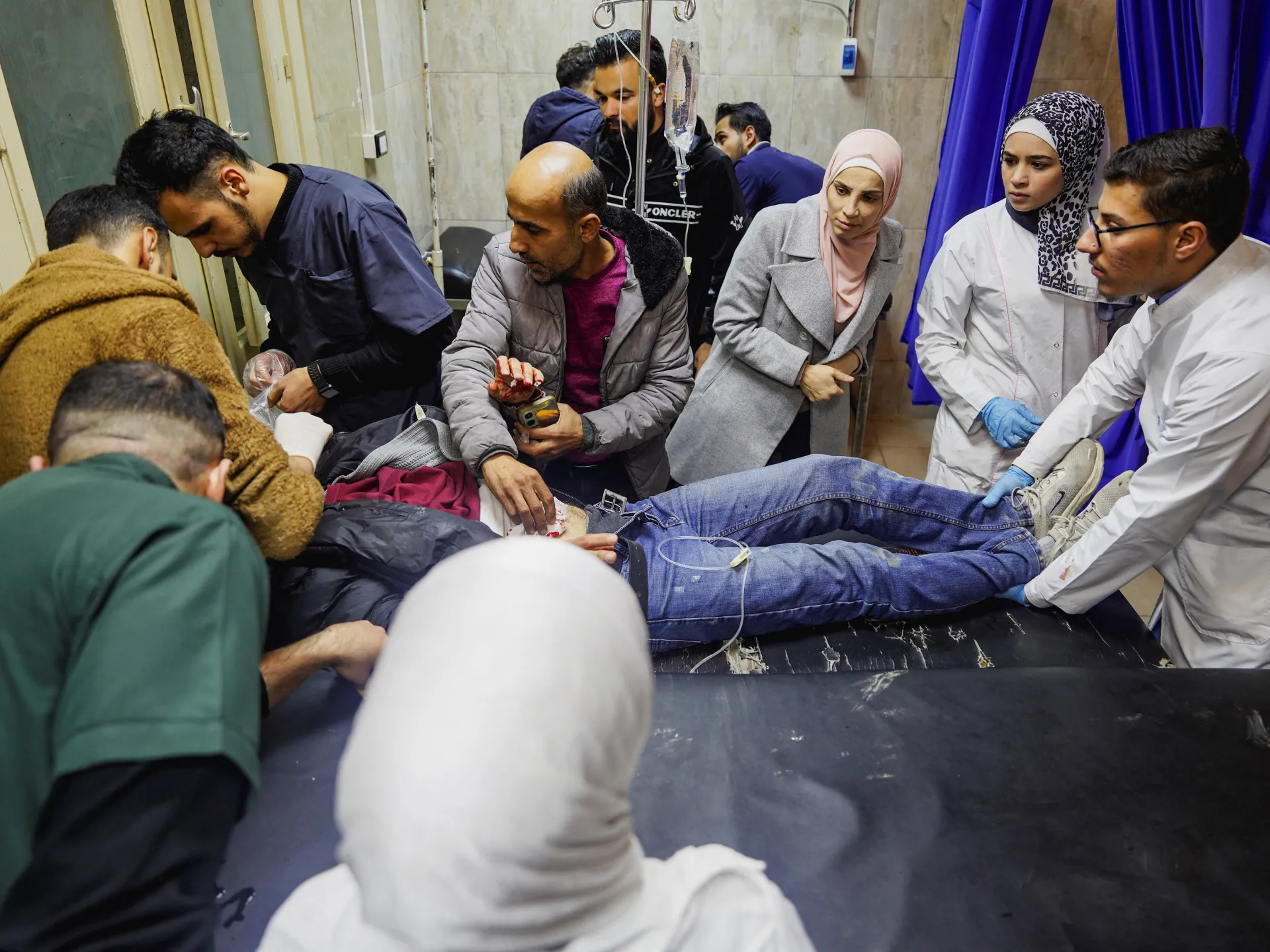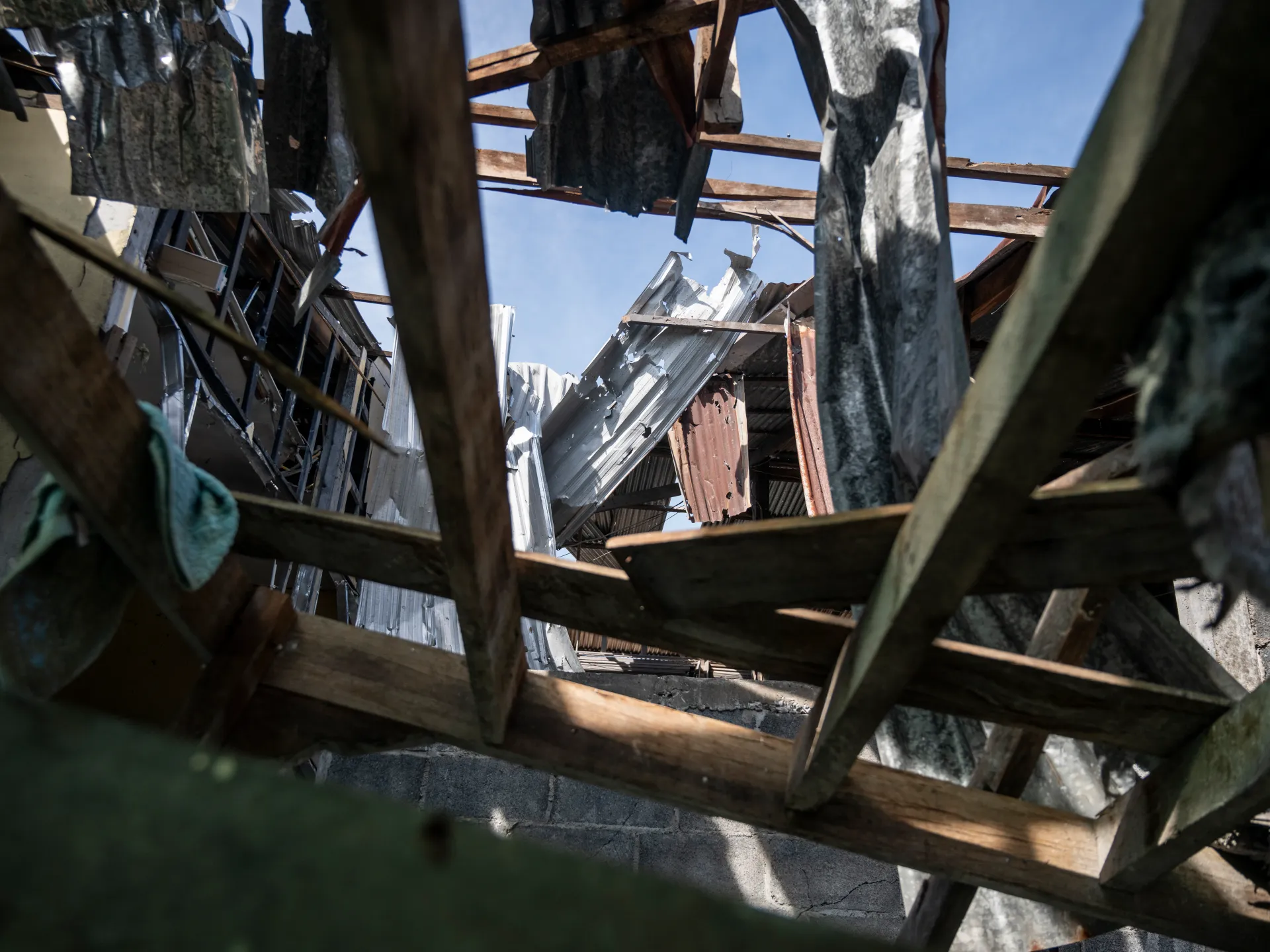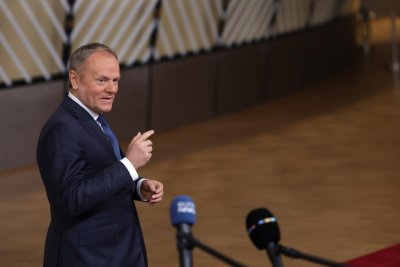WASHINGTON — As he shook President Obama’s hand and pulled him in for what he thought was a private aside, Vice President Joe Biden delivered an explicit message: “This is a big f——— deal.” The remark, overheard on live microphones at a 2010 ceremony for the Affordable Care Act, caused a sensation because open profanity from a national leader was unusual at the time.
More than 15 years later, vulgarity is now in vogue.
During a political rally Tuesday night in Pennsylvania that was intended to focus on tackling inflation, President Trump used profanity at least four times. At one point, he even admitted to disparaging Haiti and African nations as “ shithole countries ” during a private 2018 meeting, a comment he denied at the time. And before a bank of cameras during a lengthy Cabinet meeting last week, the Republican president referred to alleged drug smugglers as “sons of b——-s.”
While the Biden incident was accidental, the frequency, sharpness and public nature of Trump’s comments are intentional. They build on his project to combat what he sees as pervasive political correctness. Leaders in both parties are seemingly in a race now to the verbal gutter.
Vice President JD Vance called a podcast host a “dips—t” in September. In Thanksgiving remarks before troops, Vance joked that anyone who said they liked turkey was “full of s—-.” After one National Guard member was killed in a shooting in Washington last month and a second was critically injured, top Trump aide Steven Cheung told a reporter on social media to “shut the f—- up” when she wrote that the deployment of troops in the nation’s capital was “for political show.”
Among Democrats, former Vice President Kamala Harris earned a roar of approval from her audience in September when she condemned the Trump administration by saying “these mother———- are crazy.” After Trump called for the execution of several Democratic members of Congress last month, Sen. Chris Murphy, D-Conn., said it was time for people with influence to “pick a f——— side.” Senate Democratic leader Chuck Schumer of New York said the administration cannot “f—- around” with the release of the Jeffrey Epstein files. Democratic Rep. Jasmine Crockett, who on Monday announced her Senate campaign in Texas, did not hold back earlier this year when asked what she would tell Elon Musk if given the chance: “F—- off.”
The volley of vulgarities underscore an ever-coarsening political environment that often plays out on social media or other digital platforms where the posts or video clips that evoke the strongest emotions are rewarded with the most engagement.
“If you want to be angry at someone, be angry at the social media companies,” Utah Gov. Spencer Cox, a Republican, said Tuesday night at Washington National Cathedral, where he spoke at an event focused on political civility. “It’s not a fair fight. They’ve hijacked our brains. They understand these dopamine hits. Outrage sells.”
Cox, whose national profile rose after calling for civility in the wake of conservative activist Charlie Kirk’s assassination in his state, approved an overhaul of social media laws meant to protect children. A federal judge has temporarily blocked the state law.
Tough political talk is nothing new
Tough talk is nothing new in politics, but leaders long avoided flaunting it.
Recordings from Democrat Lyndon B. Johnson’s administration, for instance, revealed a crude, profane side of his personality that was largely kept private. Republican Richard Nixon bemoaned the fact that the foul language he used in the Oval Office was captured on tape. “Since neither I nor most other Presidents had ever used profanity in public, millions were shocked,” Nixon wrote in his book “In the Arena.”
“Politicians have always sworn, just behind closed doors,” said Benjamin Bergen, a professor at the University of California-San Diego’s Department of Cognitive Science and the author of “What the F: What swearing reveals about our language, our brains, and ourselves.” “The big change is in the past 10 years or so, it’s been much more public.”
As both parties prepare for the 2026 midterm elections and the 2028 presidential campaign, the question is whether this language will become increasingly mainstream. Republicans who simply try to imitate Trump’s brash style do not always succeed with voters. Democrats who turn to vulgarities risk appearing inauthentic if their words feel forced.
For some, it is just a distraction.
“It’s not necessary,” said GOP Rep. Don Bacon of Nebraska, who is retiring next year after winning five elections in one of the most competitive House districts. “If that’s what it takes to get your point across, you’re not a good communicator.”
There are risks of overusing profanity
There also is a risk that if such language becomes overused, its utility as a way to shock and connect with audiences could be dulled. Comedian Jerry Seinfeld has talked about this problem, noting that he used swear words in his early routines but dropped them as his career progressed because he felt profanity yielded only cheap laughs.
“I felt like well I just got a laugh because I said f—- in there,” he said in a 2020 interview on the WTF podcast with fellow comedian Marc Maron. “You didn’t find the gold.”
White House spokesperson Liz Huston said Trump “doesn’t care about being politically correct, he cares about Making America Great Again. The American people love how authentic, transparent, and effective the President is.”
But for Trump, the words that have generated the most controversy are often less centered in traditional profanity than slurs that can be interpreted as hurtful. The final weeks of his 2016 campaign were rocked when a tape emerged of him discussing grabbing women by their genitals, language he minimized as “locker room talk.” His “shithole” remark in 2018 was widely condemned as racist.
More recently, Trump called a female journalist “piggy,” comments that his press secretary, Karoline Leavitt, defended as evidence of a president who is “very frank and honest.” Trump’s use of a slur about disabled people prompted an Indiana Republican whose child has Down syndrome to come out in opposition to the president’s push to redraw the state’s congressional districts.
On rare occasions, politicians express contrition for their choice of words. In an interview with The Atlantic published last week, Gov. Josh Shapiro, D-Pa., dismissed Harris’ depiction of him in her book about last year’s presidential campaign by saying she was “trying to sell books and cover her a—.”
He seemed to catch himself quickly.
“I shouldn’t say ‘cover her a—,” he said. “I think that’s not appropriate.”
Sloan writes for the Associated Press.




